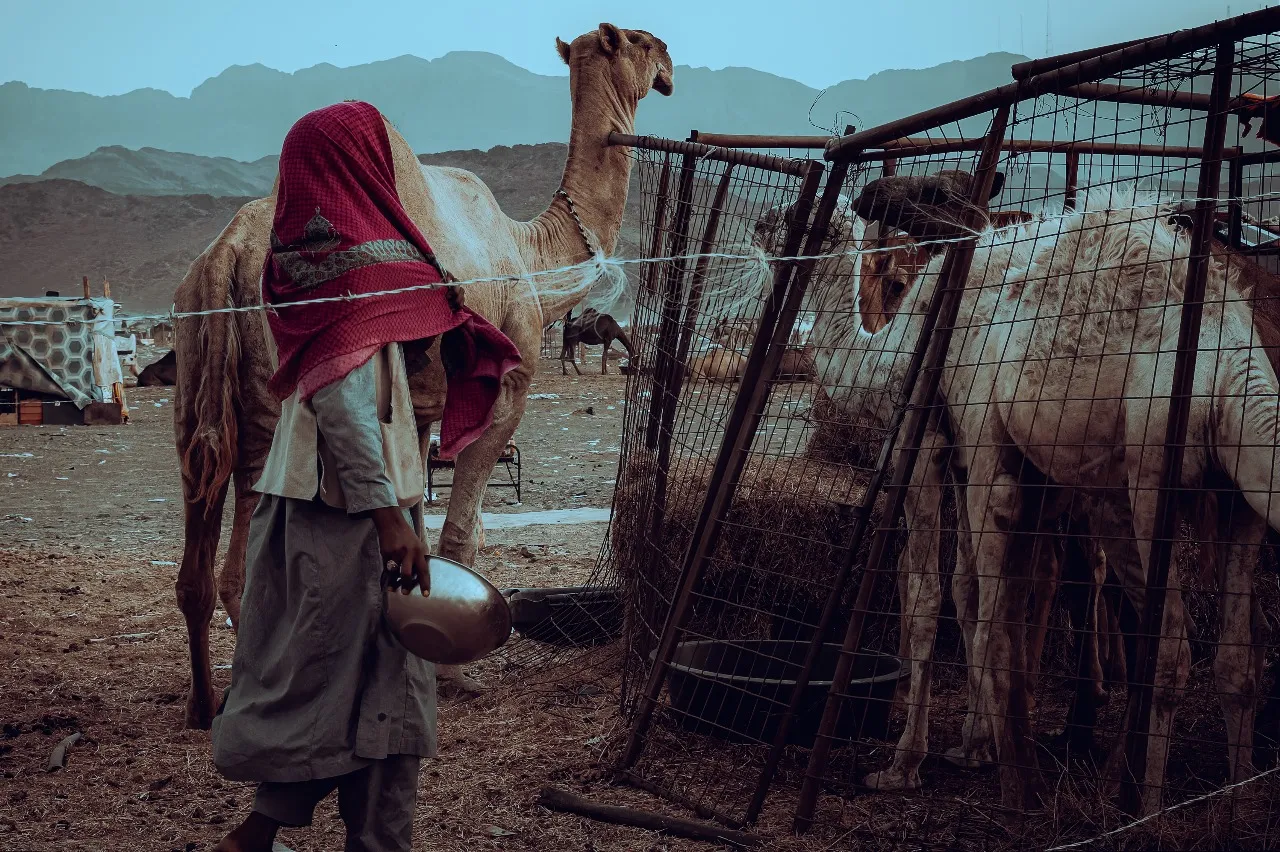In the arid desert, the poverty of the Bedouins is palpable. However, their lives are sustained by the presence of camels, which not only provide them with transport and cargo, but also a vital source of nourishment through their milk. Despite the harsh conditions, camel milk becomes an invaluable sustenance, rich in essential nutrients that help the Bedouins maintain their vitality in an inhospitable environment. This milk, loaded with protein, vitamins and minerals, is one of the few ways that desert dwellers can find sustenance and nutrition.

Meanwhile, camels feed on the sparse vegetation of the desert, perfectly adapting to their environment. Their ability to extract nutrients from the most arid plants and survive with minimal water intake demonstrates their incredible resilience. Camels’ humps, which store fat for times of scarcity, are testament to their ability to endure the harsh conditions of the desert with dignity.

On the horizon, the mountains rising majestically from the desert evoke the shape of the camels' humps, creating a beautiful analogy between these animals and the landscape they inhabit. The comparison between the humps, a symbol of their endurance, and the mountains, a symbol of the vastness of the desert, highlights the adaptation and strength of the camels to their environment.

All this and more unfolds silently when we see the world through the eyes of a camel. Their perspective reveals not only the harshness of their environment, but also the deep connection between them and the desert. In every glance, in every gesture, lies a moving narrative of resilience and adaptation that can only be truly understood from their own perspective.

Version en español
En el desierto árido, la pobreza de los beduinos es palpable. Sin embargo, su vida se sostiene gracias a la presencia de los camellos, que no solo les proporcionan transporte y carga, sino también una fuente vital de alimento a través de su leche. A pesar de las duras condiciones, la leche de camello se convierte en un sustento invaluable, rica en nutrientes esenciales que ayudan a los beduinos a mantener su vitalidad en un entorno inhóspito. Esta leche, cargada de proteínas, vitaminas y minerales, es una de las pocas formas en que los habitantes del desierto pueden encontrar sustento y nutrición.
Mientras tanto, los camellos se alimentan de las escasas vegetaciones del desierto, adaptándose perfectamente a su entorno. Su capacidad para extraer nutrientes de las plantas más áridas y sobrevivir con una ingesta mínima de agua demuestra su increíble resistencia. Las jorobas de los camellos, que almacenan grasa para tiempos de escasez, son testimonio de su habilidad para soportar las duras condiciones del desierto con dignidad.
En el horizonte, las montañas que se alzan majestuosas en el desierto evocan la forma de las jorobas de los camellos, creando una hermosa analogía entre estos animales y el paisaje que habitan. La comparación entre las jorobas, símbolo de su resistencia, y las montañas, símbolo de la inmensidad del desierto, destaca la adaptación y fortaleza de los camellos en su entorno.
Todo esto y más se despliega silenciosamente cuando vemos el mundo desde los ojos de un camello. Su perspectiva revela no solo la dureza de su entorno, sino también la profunda conexión entre ellos y el desierto. En cada mirada, en cada gesto, se encuentra una narrativa conmovedora de resistencia y adaptación que solo puede ser comprendida verdaderamente desde su propia visión.